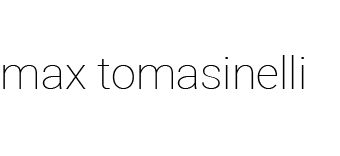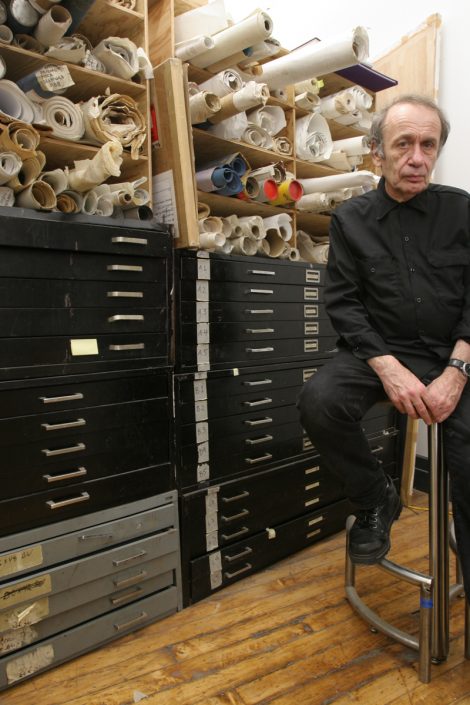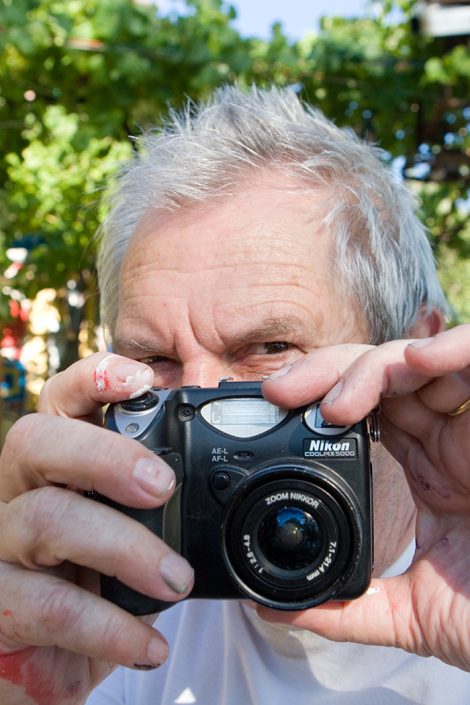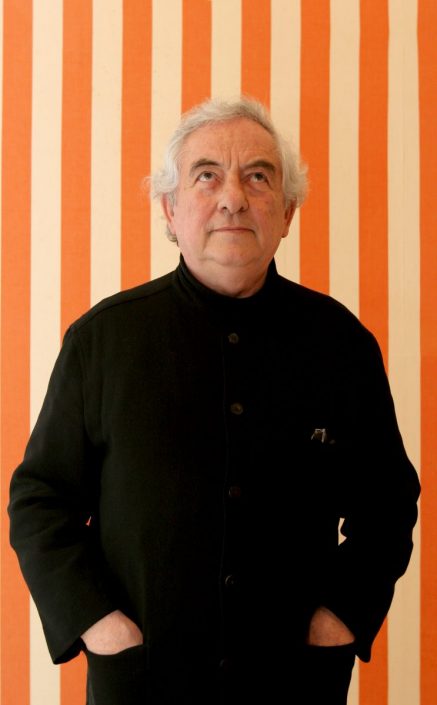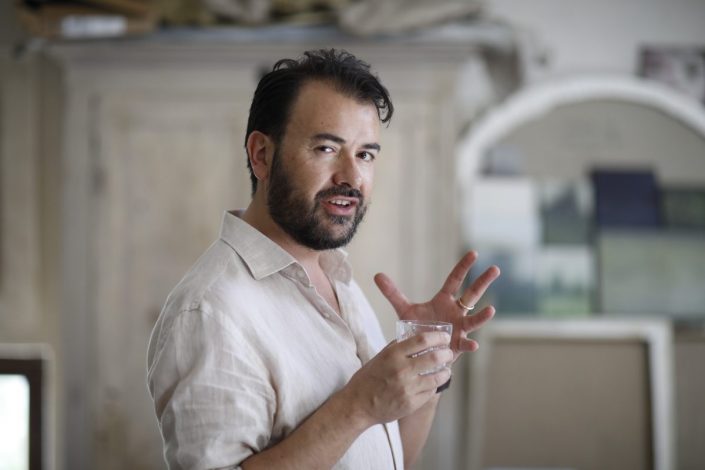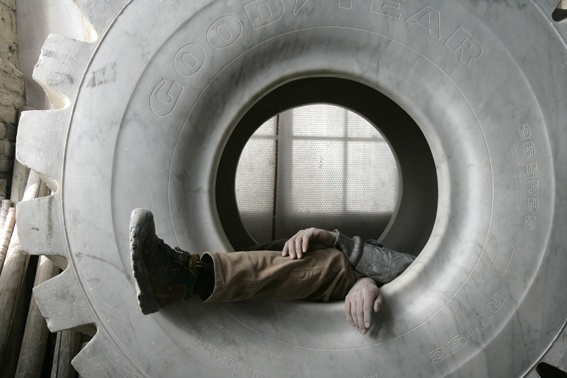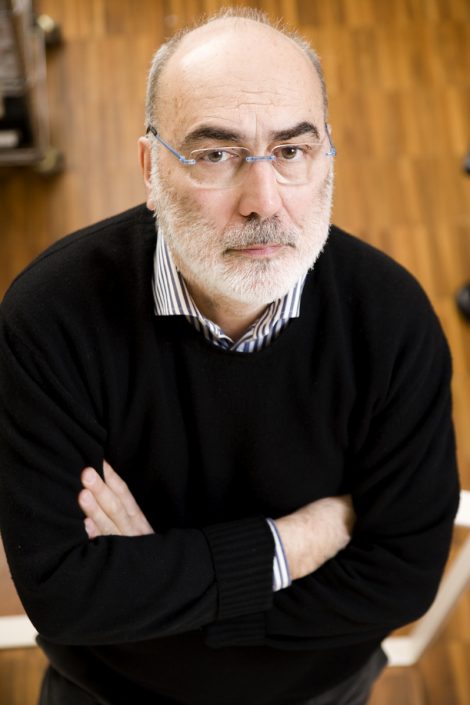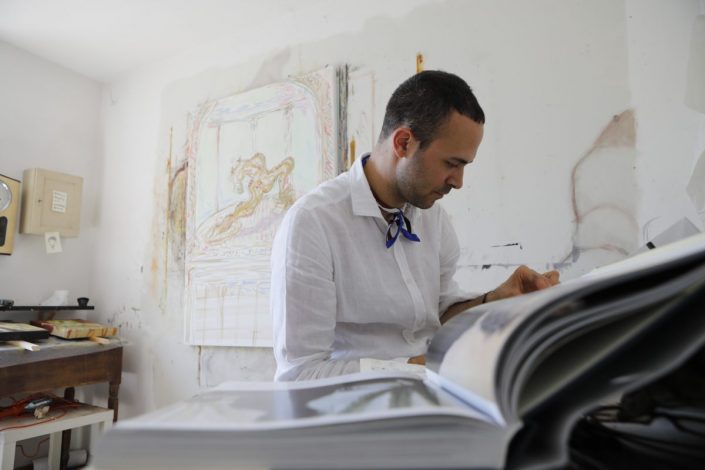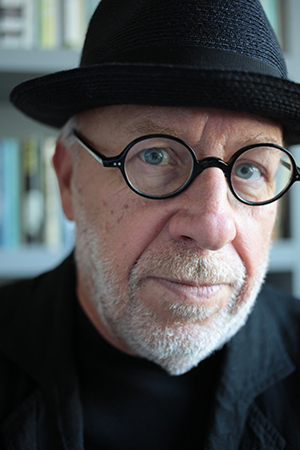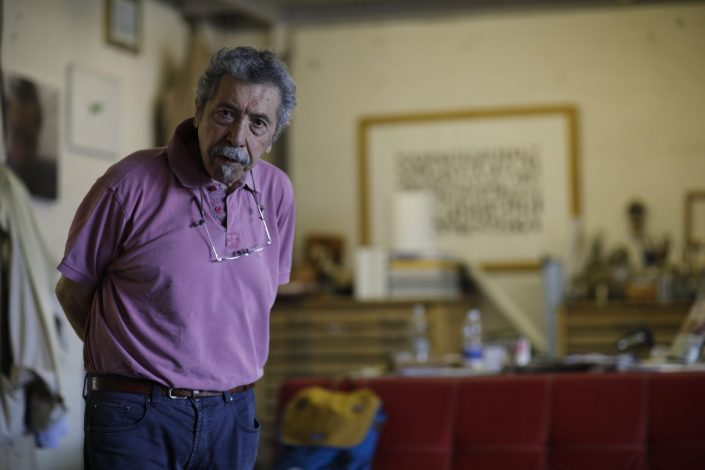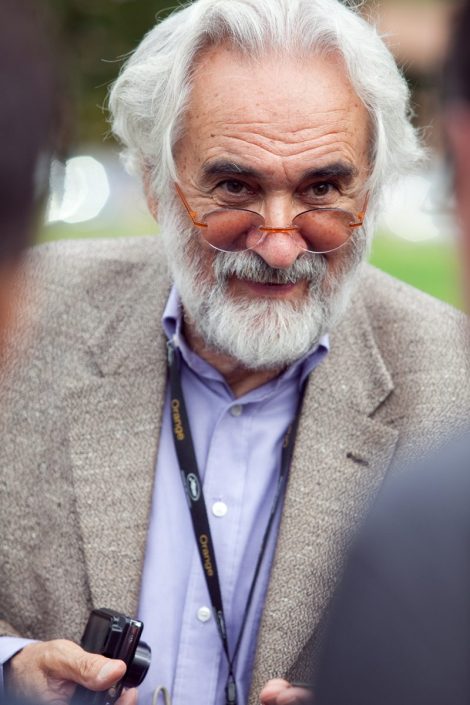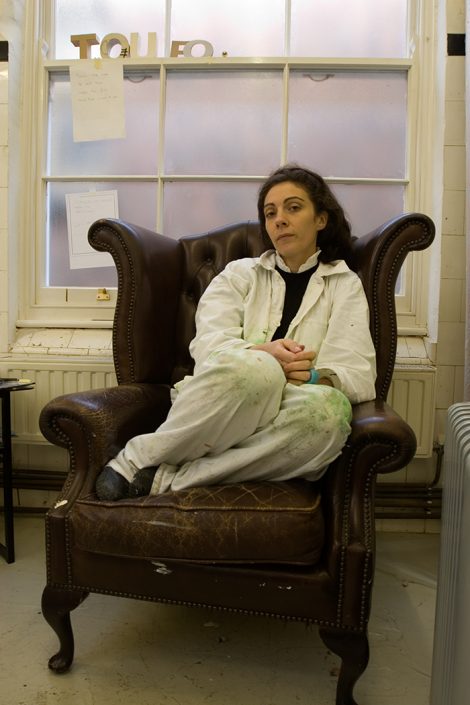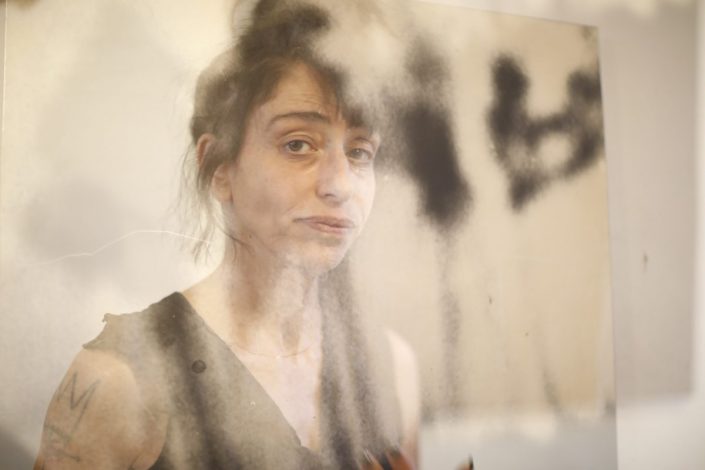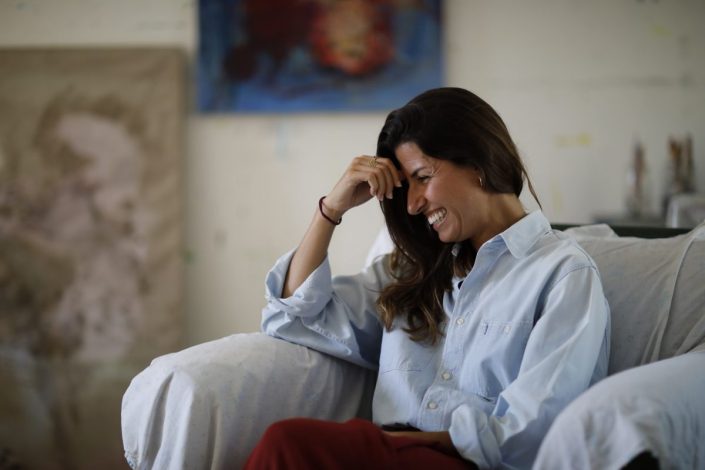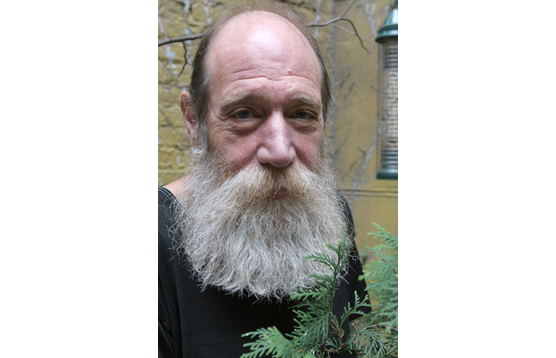Portraits of artists
If a photographer looks at the shadows to grab the light, what does a writer look at to understand writing?
By analogy to images, I thought that light, visible, were words and shadows, invisible, were spaces between them. […]
I thought I’d like to work on man, not on the artist. I would show their little or big weakness, their dull habits, their mania and obsessions, their taste, their gestures, their infections and expressions, and eventually the way they sit, laugh and gesticulate.
M. T., Les Artistes sont des anges, 2016
Dans l’eau sale
Agnese Lovecchio
What happens today has already happened, probably in different forms, but it already did. I am referring to the performative gesture with which the artist explores, plunges and hesitates, finally making the image of his work authentic. More here than elsewhere, photography suddenly breaks other possibilities: with a single choice, the artist takes the responsibility that from past to present, it will give back the same value, despite unconveniently balancing between new visual culture and stylistic habit.
Far from the short-range potential of likeability, doomed to fade like any trend, for over ten years Max Tomasinelli has focused on a project having mimesis and sense of community at the core of his work, and made his fortune in terms of knowledge and truth. Yes, because Max acts like Teju Cole in Open city: «He went to the phone and said, Hello, who’s there? Oh sure, how are you, but excuse me, remind me where we met. I told him. Oh yes, of course. Are you staying in Belgium for a month, three weeks, right? When are you leaving? Ah, so soon. Well, why don’t you call me on Monday? We can go out for dinner or catch up before you leave». And so, thanks to a telephone number, an email or a casual encounter, Max meets artists in order to photograph them, as well as to get to know them, aiming at discover how they live, what they think, how they express themselves, who they are.
Several times postponed or canceled or even quickly interrupted, every meeting always holds a paradox, related to photography as an instrument. But that’s it: the pose, the stillness required and the impossibility of being completely motionless, the embarrassment of being observed and the uncomfortable sensation of feeling as an object.
Being shot means giving an image of oneself that potentially reveals what we already are, beyond surrender. Whether aseptic, detached and objective or intimate, intense and subjective, Max follows the rule of not intervening “on photography”, altering it or reinventing its language. But “with photography” he studies the bond that ties the image of oneself to one’s personality and therefore to the places where it belongs. In this way, the pose is already a photograph itself, to the extent that it shows, through appearance, a seed of identity. Once he formulates his own associations between a photographic portrait and another, perceives a corner or a single detail, Max reduces or enlarges the format of his works as if he was using a photo zoom dictating a certain rhythm. Or a somehow necessary stability inside a bathtub.
The title of the exhibition clearly recalls a photograph taken by Max in 2007 on the hills of Nice, in Ben Vautier’s messy atelier. On the tub in which it is immersed, the French artist writes «On est tous dans l’eau sale de la bagnoire de Marcel». A true statement, if any statement after Duchamp has challenged the very idea of what a work of art (and therefore an artist) is. The questions about the notions of originality, aura, progress, masterpiece and authorship that threaten to destabilize the pillars on which the history of art itself is built then persist.
At the most daring, the task of lifting the plug of the tub.
